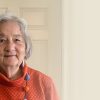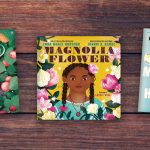My writing career grew out of 14 years in the classroom as an English and reading teacher in the public schools of Pagosa Springs and Durango, Colorado. My career choice owed a lot to an experience in the fourth grade when my teacher read Call It Courage aloud to the class. I couldn’t wait to come through her door and find out what was going to happen next. I felt like I was inside that story.
Maya Angelou said it best in I Know Why the Caged Bird Sings: “When I finished the cookies, (Mrs. Flowers) brushed off the table and brought a thick, small book from the bookcase. I had read A Tale of Two Cities and found it up to my standards as a romantic novel. She opened the first page and I heard poetry for the first time in my life . . . her voice slid in and curved down through and over the words. She was nearly singing. I wanted to look at the pages. Were they the same that I had read? Or were there notes, music, lines on the pages, as in a hymn book?”
Let’s face it, many if not most students reading silently are merely glossing over the words. Unsurprisingly, the words fail to come to life. As a result, far too many students show little improvement from year to year. The good news is that it’s never too late to experience the same revelation Maya Angelou wrote about. When students listen frequently to verse and stories read aloud, they develop an inward ear that enables them to read silently at a much higher level, hearing “the notes and the music.” In combination with the skills you teach, read-alouds are key to kids making big strides in reading comprehension and vocabulary development. You’ll notice the difference in their writing as well.
A worthy goal for your new school year would be a daily read-aloud, no matter how brief. The possibilities are endless, especially when it comes to poetry. “The Cremation of Sam McGee,” which I memorized back in ninth grade for a speech contest, was always a crowd-pleaser. Unforgettable song lyrics, stirring speeches, classic short stories—your students will eat them up, and they’re merely side dishes. To my mind, nothing beats the sustained reading experience even a short novel provides. Novels were the main course in my classroom, one per quarter. Reading a novel aloud and dramatically is teaching at its finest. At every turn you’re modeling what real reading is all about and how hugely enjoyable it is. I knew it was the most valuable thing I could do for my students and the best way to pass along the joy of reading. Over the years, those read-aloud novels were hands-down the most popular activity in my teaching kit. For any teacher, “most valuable” and “most popular” is a big win-win. I should add that I had a set of paperbacks so students could hear and see simultaneously. These days they’d be following along on their laptops.
Once you’ve hooked them with a riveting novel, your students are primed for more on their own. The goal is to make independent readers of them. I stocked my classroom library with several hundred YA novels and read them avidly while providing incentives for my students to do the same. Those books were my motivation for trying my own hand at writing fiction. It was a case of “I want to do that!”
Knowing my audience as well as I did informed my writing in a big way. I knew how readily kids would give up on a book when the writing lacked clarity or dramatic tension. With every line I wrote, I was hearing the dialog and the flow of the prose in my inward ear. When revising, I would read aloud what I had written, and I could hear where it needed work. Still, it took years of trial and error. The first story I sent to New York, circa 1981, was published in 1989 in its sixth draft as my second novel. That was Bearstone, which School Library Journal called “far above other coming-of-age stories.” When I sent that clipping to my mom she replied with, “Will, don’t get a big head.” Still, Mom went to busting her buttons when Prentice Hall selected Bearstone to be the successor to Where the Red Fern Grows in their seventh-grade literature anthology.
All of us are hoping to play a part in leading kids to become lifetime readers and lifetime learners, and I’ve been able to play a part both as a teacher and as a writer. While writing adventure novels steeped in character, I reveled in interweaving fascinating content that was integral to the story and its setting. Novels engage the emotions, and that makes them a great way to effortlessly learn natural history, human history, ethnobotany, astrobiology, you name it. The brain remembers what the heart cares about.
All of my novels are still in print. That all 20 were recorded as unabridged audiobooks I credit to my long experience as a read-aloud teacher. Though I encourage you to develop the power of your own voice, especially when it comes to classroom novels, audiobooks performed by phenomenal Broadway actors are a great way to go. Among the many formats, there are short-term rentals that extend to every student in your classroom.
Speaking of your classroom, let’s go back to Maya Angelou and her Mrs. Flowers. Here’s another quote for language arts teachers to live by: “Your grandmother says you read a lot. Every chance you get. That’s good, but not good enough. Words mean more than what is set down on paper. It takes the human voice to infuse them with the shades of deeper meaning.”
In the “Will’s Books” section of my website (WillHobbsAuthor.com), you’ll find an interview with photos for each of my novels. Here are links to two samples: For grades 7-9, Downriver. Richard Peck hailed it as “the quintessential young adult novel.”
https://www.willhobbsauthor.com/books/bk_rthunder_driver_ideas.html
For grades 4-6, Go Big or Go Home. It’s the most fun of all my books; the one that would have been my favorite when I was that age.
https://www.willhobbsauthor.com/books/bk_gobig_ideas.html
Thank you for all you do for kids and for books!






